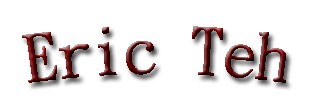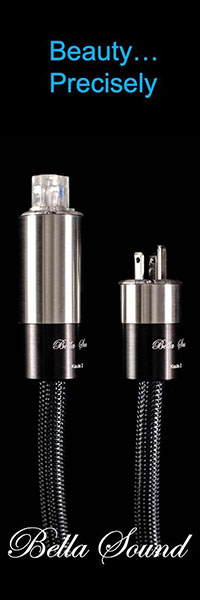I recently attended a media event organised by Sony Singapore to introduce the NW-ZX2 – the latest flagship Walkman from Sony. Mr. Katsumasa Yoshioka, Senior Electrical Engineer flew down from Tokyo to present the product and to take questions from the attendees. Yoshioka-san was the leader of the electrical design team for the ZX2.
Technical Design
| Yoshioka-san presenting the technical design of the NW-ZX2 |
The ZX2 was developed to co-exist with the ZX1 in the product line-up. Taking on user feedback, the design team sought to achieve a sound that was sharp yet not piercing, as well as being classy and smooth. To achieve this goal, the design team made improvements in the chassis, battery and audio components used.
The chassis improvements warrant some explanation. The ZX2 shares a similar aluminum alloy chassis to the ZX1. However, the ZX2 adds an internal copper housing, which is gold plated. Yoshioka-san explained that this was done to exploit the strengths of the various materials used, with aluminum offering a good balance of sound, and copper offering both good high and low frequencies, and a warmer sound. The copper housing is plated with gold to provide resistance to corrosion, as well as to provide a stable and low resistance ground plane.
| The production of the ZX2 starts off with the solid aluminum alloy block as shown in the upper left corner of the picture. |
| A teardown of the ZX2 |
The new battery has a much larger capacity (1,860 mAh compared to 960 mAh for the ZX1) and an astounding rated 60 hour playback time with MP3 or 61 hours with standard resolution PCM / FLAC. High resolution playback brings down battery life to 16-43 hours of playback depending on sampling rate and file format (43 hours for 24/96 FLAC, and 16 hours for 5.6 MHz DSD) . There is of course no free lunch, and the trade-off is low output, at 15mW (no impedance rating specified). The circuit was also improved by thick copper PCB traces, multi-layer capacitors and additional Sanyo Oscon capacitors (an increase over the ZX1 from 4 to 7 pieces). Separate ground wires for each channel (to reduce crosstalk between the channels) connect the audio board to the 4 pole output jack. Compatibility with 3 pole unbalanced connectors suggests that this is a non-balanced output. Fans of balanced drive will need to fork out extra for the PHA-3 DAC/headamp.
The ZX2 also gets two separate crystal clocks (44.1 kHz and 48 kHz) compared to the single clock used in the ZX1. The clocks are special low phase and noise parts.
Features
Features wise, the ZX2 comes fully loaded, with Bluetooth, Wireless-N wi-fi, and even a GPS receiver. Internal memory capacity is 128GB, and a micro SD card slot allows memory expansion. File format compatibility includes MP3, WMA, AAC, FLAC, AIFF, WAV, ALAC and DSD (2.8 MHz and 5.6 MHz).
The 4 inch display has limited resolution by today’s standards (854×480), but playing back the sample clip looked acceptable in quality to me.
Feel and Operation
The ZX2 certainly feels like a flagship product. It has the necessary heft and build quality which is commensurate with it’s price tag and product positioning. It is probably a bit too big and heavy to drop into your front shirt pocket though.
It was quite intuitive to operate, and anybody who has handled an Android based device should feel right at home. The recessed buttons on the side are not the easiest to operate though. The PHA-3 DAC/headamp is able to tap the ZX2’s digital output via Sony’s proprietary WM-port slot located at the bottom of the unit. I did not explore advanced features given time constraints.
Sound Quality
The ZX2 certainly sounded very detailed and spacious, with good bass impact. The high-resolution tracks uploaded on the demonstration units really showed off the ZX2 in a good light, and the sound quality on offer is very promising. Some thoughts on the drive ability of the ZX2 – 15 mW is not an awful lot of current to play with. You will need to choose your partnering equipment carefully unless you pair the ZX2 with a headamp. Driving the MDR-1ABT (24 ohms, 98 dB/mW) was perfectly adequate though. Coming to the MDR-Z7 (70 ohms, 102 dB/mW sensitivity), I was close to 80 % of the ZX2’s maximum volume at my typical listening levels – you almost certainly need a headamp with the Z7.
Quick Questions with Yoshioka-san
I took the opportunity to ask Yoshioka-san some questions about the ZX2. The first question related to DSD implementation in the ZX2. Yoshioka-san explained that the ZX2 did not handle DSD natively but converted it to PCM first. I also asked for his thoughts on the ZX2’s drive ability. He suggested that a headamp be used for best results. I noticed that the presentation slides stated that the ZX1 used a single clock at 48 kHz. Yoshioka-san confirmed that the ZX1 upsampled standard redbook files from 44.1 to 48 kHz.
Parting Words
There has been quite a lot of online criticism against Sony over the pricing of the ZX2 (local RCP is S$ 1,599), which is substantially higher than the price of the ZX1. Understanding the design and improvements made by Sony’s team gave me appreciation of the effort and thought that went into the ZX2. Hopefully, the opportunity will arise for an in-depth evaluation of the ZX2.
A note of thanks to Sony Singapore (in particular Mr. Leon Pereira) for inviting me to this event.


Website: http://www.sony.co.uk/electronics/audio-components/map-s1
Eric also publishes his own blogspot out of Singapore entitled Eric’s Hifi Blogs (http://singaporehifi.blogspot.com/)





Be the first to comment on: Sony’s new Walkman